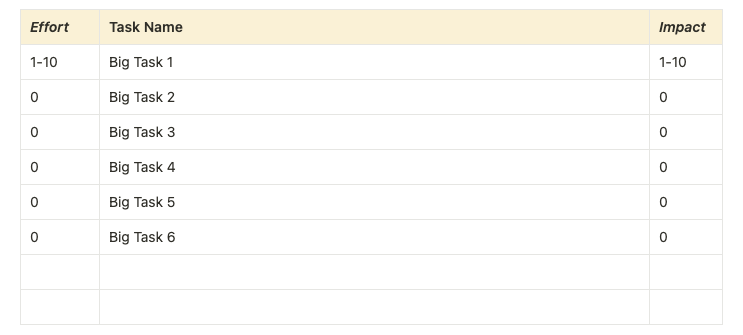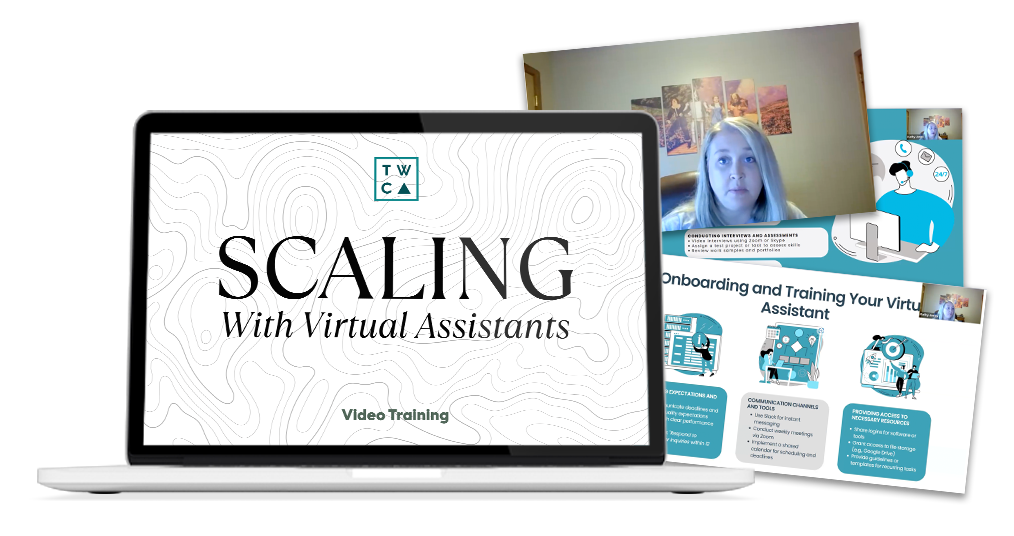You Have Limits – And That’s Okay
Do you ever sometimes sit and wonder how much more work you could get done (and, subsequently, how much faster your business could grow) if there were 10 of you?
If you could clone yourself over and over again, and then set those clones to work handling different aspects of the business that demand your precious time?
You’re not alone. When you first set out to build a business, the entrepreneurial dream is so intoxicating that you feel like you can run 100 mph indefinitely and accomplish every one of your goals. The drive is high and the drag feels low.
But, reality eventually kicks in. You don’t scale infinitely, no matter how much you would like to. You have very real constraints on your time and bandwidth. While some of those boundaries can be pushed out or expanded through efficiency, prioritization and instituting good systems for productivity (like the ones we teach in our Peak Productivity course), they can never be erased completely.
If you want to scale you will need help. This means you’ll need to hire. The idea of hiring terrifies a lot of younger business owners because this means sacrificing margin with no immediate guarantee of a return – and when you’re starting out, profit margins and EBITDA feel like the most important thing to focus on.
Take this unsolicited tip from a seasoned team that’s worked with thousands of entrepreneurs:
Margin in your time, energy, and enjoyability is just as important (if not more) than your profit margins.
So, how do you begin the process of bringing in the help that will increase your ability to scale, without breaking the bank in these formative moments of your business?
Enter virtual assistants (or VAs).
The Massive Expansion of the VA Market
You may or may not be familiar with the concept of virtual assistants, so let’s quickly break that down, and then jump into how to start finding one for your business.
Simply put, a VA is a remote professional (often, but not always, international) who is capable of providing various levels of service to your business. This can include administrative work, technical support, customer care, and even creative services.
Over the course of the last decade, the VA industry has exploded, as more and more business owners seek practical ways to improve productivity, create flexibility, and reduce strain on their money and time.
- Recent estimates say that there could be as many as 40 million virtual assistants currently operating in a vast number of countries that span the entire globe (almost without exception)
- A study published in April 2024 by Gitnux states that the VA market size is expected to expand to $19.6 billion by 2025
But the numbers themselves are sort of just window dressing.
Let’s get down to how VAs could be applicable to scaling your business.
Finding An Excellent VA
The journey to hiring your first VA starts with figuring out what your business needs.
If you’re a solopreneur, let’s start by doing a modified version of the RICE Analysis – we call it the “Prioritization Matrix.” It looks like this:

It’s simple to use:
- List out all tasks on your plate for this week/month/quarter/etc (whichever time frame you are trying to maximize) in the center column of the table
- In the left hand column marked “Effort”, rate the effort required to complete each task on a scale of 1-10 (1 being hardly any effort, 10 being maximum effort). NOTE: Do not use hours required to complete – this is merely an indicator of how much effort is required to complete a task on a scale of 1-10.
- In the right hand column marked “Impact”, rate the impact that completing each task will have on achieving your personal or team goals on a scale of 1-10 (1 being nearly no impact, 10 being tremendous impact).
- Analyze your tasks accordingly:
- Anything with low effort and high impact should stay on your plate
- Anything with equal match of effort and impact should be next priority
- Anything with high effort and low to medium impact (or even some tasks that are high effort and high impact) are likely things that can and should be delegated to an excellent VA
Now, you should have a list of things that would be perfect for a VA to tackle for you, and you should be gaining an understanding of the skill sets that might be required from this person.
The next step is to source and hire a VA. We recommend using platforms like Upwork, Freelancer, or LinkedIn to source talent, in addition to requesting referrals from your network, and even looking into VA agencies. This should be enough to at least get a small pool of candidates for you to start sorting through.
From there, set to work interviewing and assessing the best “fit” for your business.
Always conduct your interviews over Zoom (face to face is a critical component of working well with your VA), and be sure to assign test projects or tasks that align with the type of skills or behaviors that will be required of this individual. Look for a healthy mix of experience, cultural “fit,” and communication skills.
(Note: We’re keeping this surface level, but if you’d like a deeper dive into EXACTLY how to go about this, and all of the best practices for onboarding and supporting your VA so that they do excellent work for you, we have a 3-hour, value packed training course on all of the ins and outs of using VAs in your business called Scaling with VAs – available for $27 here.)
Getting the Most From Your VA
Oftentimes, getting the best and most consistent performance from your virtual assistants has very little to do with them… and nearly everything to do with you.
Here is sort of a rapid fire list of things you can do to best leverage your VAs:
- Clear, concise communication of project details and expectations are paramount to the success of any VA. If the objectives and end goal are not made clear, they will struggle. Remember that, in many cases, your VA will be a literalist – they will do what you tell them to do, EXACTLY how you told them to do it. So, think through what you are asking them to do and communicate it clearly.
- Robust SOPs are critical. Every detail of what you want done and how you want it done should be recorded (either as a Loom or in a document that they can refer to later). Repeatability (with excellence) only comes from clear direction. When mistakes get made by VAs, it is often as a result of the system itself being unclear, or proper instruction not being given.
- Provide regular feedback. When your VA does something you like, acknowledge it. When they do something you don’t like, or the quality of a specific project is not up to your standard, point it out quickly and provide context as to why (plus notes on how to fix).
- Establish KPIs and set standards for working within the company (i.e. – minimum response time on new requests). Monitor their performance and conduct evaluations with them regularly. Then adjust their goals and targets as necessary. Most VAs want to be told when they are hitting the mark and when they are missing it – they want trackable and achievable goals, just like any other employee would.
This is not an exhaustive list – we cover tons more in our Scaling With VAs product.
But the bottom line is this:
Investing some of your time up front in the proper training and equipping of your VA will allow them to free up more and more of your time. The better you handle the onboarding and management process at the beginning, the more substantial the long term effects will be.
To learn more about exactly how we source, hire, and train the dozens of VAs that work inside of our businesses, pick up our 3-hour masterclass, Scaling With VAs, and get started on your journey to scaling your output without breaking the bank.

Get Our Entire VA Masterclass
In this exclusive 3-hour masterclass, learn how we hire, train, and manage our virtual assistants across all of the businesses in our portfolio. This system is worth hundreds, but we are making it available to you for just $27 now!

